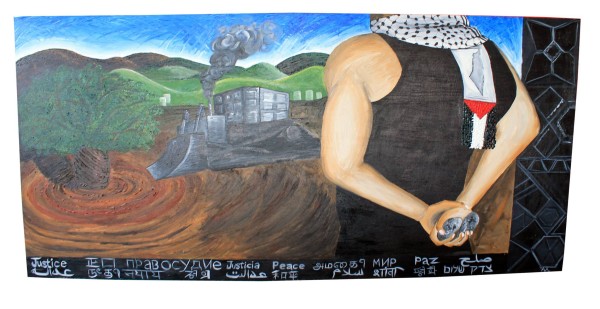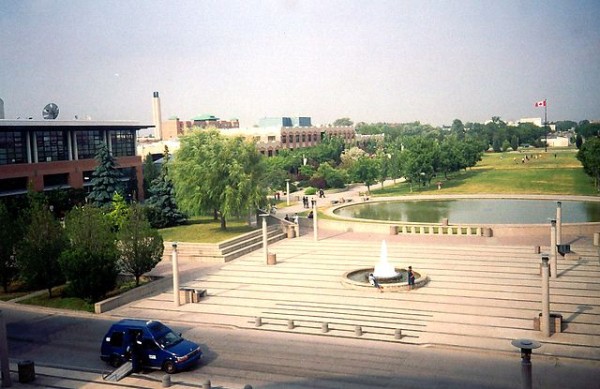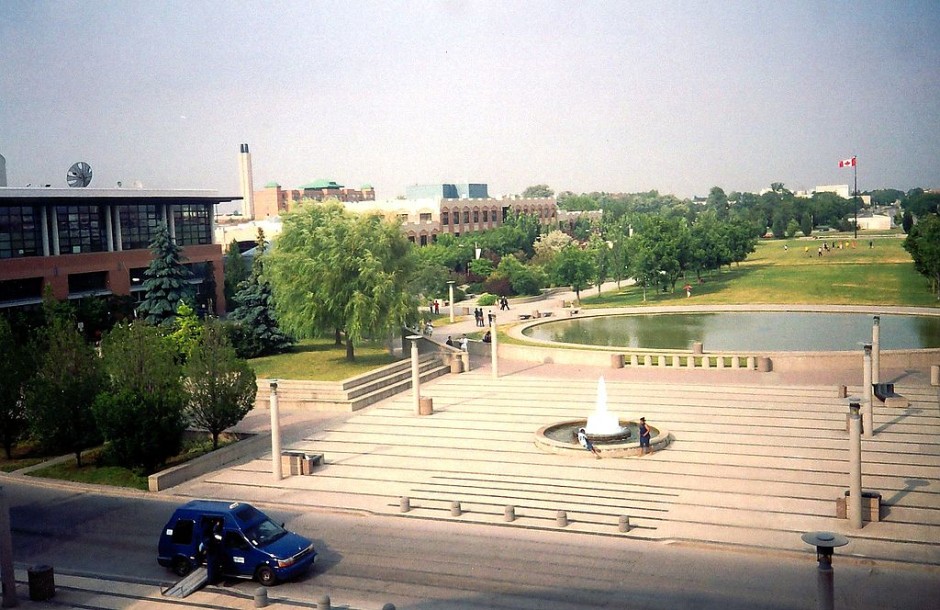Toronto’s York University has not been a particularly hospitable place for Jewish students for the past few years. Many feel that a climate of antisemitism, masquerading as “anti-Zionism,” pervades the university. Some students have feared for their physical safety at times.
Things took an even uglier turn last month. A pro-Palestinian acrylic mural that has been on display over one of the entrance foyers to the Student Centre since 2013, entitled “Palestinian Roots,” has drawn criticism.

It shows a person looking at a bulldozer close to a building while holding rocks. He is shown wearing what looks like a Palestinian flag with a map of Israel without its borders — in other words, a map lacking the “Green Line” that divides Israel from the West Bank.
At the bottom of the mural, the words “justice” and “peace” can be seen along with other text.The artist, Ahmad Al Abid, is a 2013 graduate of York.
Gayle McFadden, chair of the York University Student Centre, sees nothing wrong with this. She said the student’s piece was “an artist’s interpretation of what’s currently going on in Palestine.”
She added the usual boilerplate: “Antisemitism is directly against people of the Jewish faith, and I think that is abysmal and horrible, but critics of the state of Israel are not that.” The work is “merely critical of the state of Israel and its continued occupation of Palestine.”
She, of course, thinks she knows better than the Jewish students do as to what is and isn’t “antisemitic!”

Paul Bronfman, the chair and CEO of William F. White International Inc., a provider of movie and theatrical production equipment, was less sanguine when he recently learned of the mural.
His company has provided thousands of dollars of equipment and technical services, as well as access to seminars, student lectures, trade shows and open houses, to the university.
He contacted York University, but was told the student centre is its own legal entity. Administrators, he complained, “gave me a bunch of political rhetoric” and “nonsense.”
Bronfman told York University president Mamdouh Shoukri that the school would be “persona non grata” until the painting was removed. “It’s not artistry; it’s just pure hate,” he contended.
“I’m finally putting my money where my mouth is. I’m withdrawing all of our student filmmaker support,” Bronfman declared.
“This poster is more than a mere piece of art — it is propaganda, and a clear call to murder,” Avi Benlolo, president of the Simon Wiesenthal Center for Holocaust Studies, has stated, adding that antisemitic attitudes are already “rampant” at the university.
Benlolo said he had heard of Jewish families who no longer want to enroll their children at York. Some students no longer wear overt displays of their faith, such as Star of David necklaces or kippas.
In 2013, the York Federation of Students officially endorsed the BDS (Boycott, Divestment, Sanctions) campaign, a push to impose economic and academic sanction on Israel.
Even ordinary Jewish events are routinely targeted by protesters. Last December, a Chanukah get-together sponsored by the Hillel Jewish student group at York was disrupted by supporters of Students Against Israeli Apartheid. It is, of course, a Jewish religious holiday more than 2,000 years old.

“If a mural condoning violence against any other nation was hung on campus, it would rightfully be condemned. Only when it pertains to Jews do we see this disturbing double standard,” remarked Danielle Shachar, a fourth-year psychology student, describing York as “a breeding ground for violence, hate and discrimination against Israel and its student supporters.”
She indicated that it leaves her feeling unsafe, especially on a campus where there has been violence against Jewish students in the past.
Natalie Slavat, the president of the York Hillel, asserted that “while the intentions of the artist are ambiguous at best, the way in which this piece is perceived by many Jewish students like myself is anything but vague.” In the context of the Israeli-Palestinian conflict, “stone-throwing means one thing: Violence.”
Is the painting antisemitic? This is a matter of conjecture, because technically it is only criticizing Israel. But this may have become a distinction without a difference, since so-called anti-Zionist attacks more and more morph into simple antisemitism. I’m inclined to agree with the Jewish students, who certainly see it as creating a chilly climate for them at York. Perhaps they should have the last word.
Henry Srebrnik is a political science professor at the University of Prince Edward Island.

